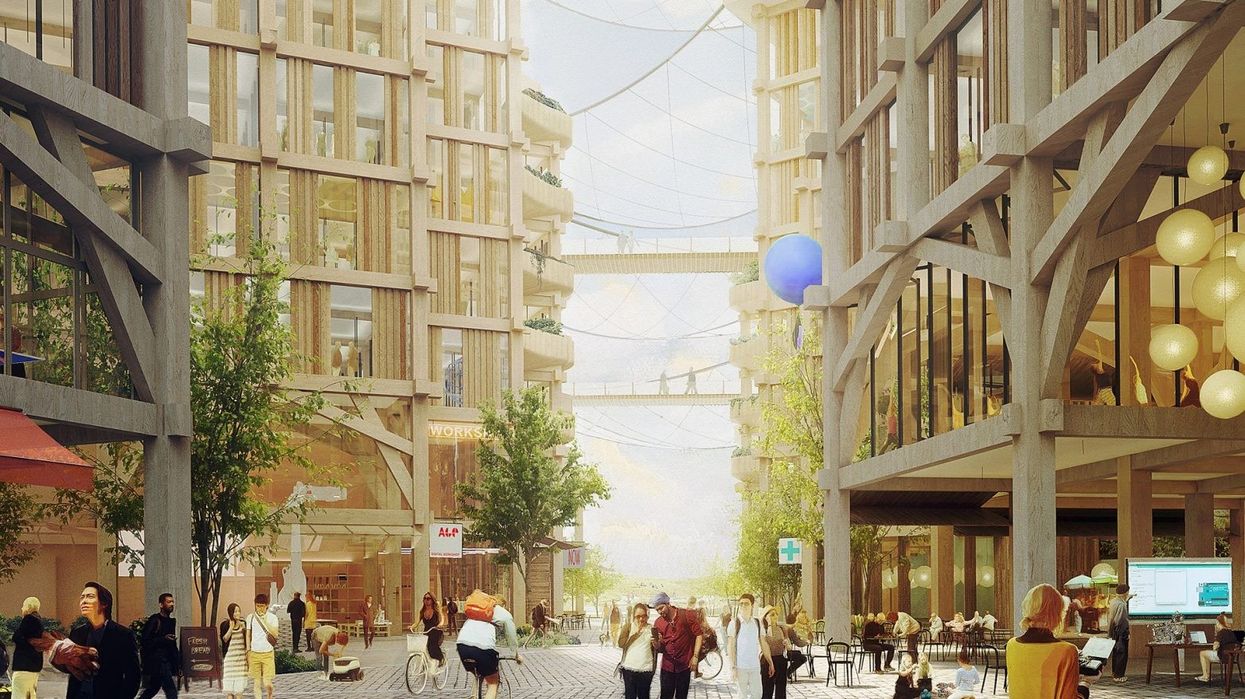Long before a hole is dug or a is brick laid, Sidewalk Lab’s Port Lands future city proposal has become a big part of the local landscape. Discussions for and against the massive project have raged for several years now. Though mostly focused on the issue of privacy, the debate has settled nothing. Indeed, media coverage has been largely misguided and frequently off the mark.
READ: Sidewalk Labs’ Master Plan For Toronto Waterfront Raises More Questions
As critics tell it, Sidewalk Lab’s scheme, Quayside, presents nothing less than an existential threat to individual identity. It would, they say, turn us into human guinea pigs participating in a huge corporate experiment disguised as a progressive urban development plan. Many see it as little more than a plot to “steal” our data, use it for their own gain and/or sell it to the highest bidder. Unsurprisingly, these accusations are understandably vague and unformed. For the most part, they are based on little more than the fact Google is a Sidewalk Labs’ sister company. Both are owned by Alphabet Inc. of California.
The noise has been loud enough to drown out consideration of Quayside as a serious urban experiment. The response has been limited to the double-edged notion that Sidewalk’s plan would co-opt our Torontonians and ultimately Toronto. One commentator called it a “Trojan Horse.”
READ: Sidewalk Labs’ Waterfront Project Under Fire From Industry Leaders
This isn’t just ridiculous, it has blinded people to the many benefits included in the bid. Sidewalk promises to build a fully sustainable mixed-use community with over 1,000 units of affordable housing. It also pledges pedestrian-friendly streets in a community organized around public transit. There’s also a raft of specific innovations, everything from “raincoats” for buildings and modular paving to underground utilities and wooden structures including 12 timber towers, up to 30 storeys tall. Buildings would be designed for maximum flexibility while being environmentally responsible.
But as Canada’s first community “built from the internet up,” Quayside has conjured up visions of a Black Mirror-like neighbourhood in which residents are under constant surveillance, their every move recorded. However predictable, these fears overlook the important fact that we are in control. That means Waterfront Toronto, the tripartite agency heading Port Lands revitalization, the City of Toronto as well as provincial and federal governments. They set the rules by which Quayside must abide, including those pertaining to privacy. When regulations require data be “de-identified,” Quaysiders will have a reasonable expectation their privacy will remain intact, that they will continue to be anonymous.
READ: Sidewalk Labs Plans To Expand Toronto’s Quayside Project
As is so often the case, however, the public sector, especially Toronto, is befuddled, behind the times and slow to respond. Perhaps the fear that Canadian political institutions are not up the task of exercising control lies at the heart the criticism of Quayside. In other words, the problem isn’t Sidewalk Labs so much as whether we are able to oversee the redevelopment process.
Another, more substantive, controversy is that Sidewalk’s ambitions have grown from its original 12-acre site, Quayside, to 190 acres of the Port Land. In 2017, when Waterfront Toronto selected Sidewalk as its Funding and Innovation Partner, the company as given a year to develop a plan for the smaller parcel of land on the eastern waterfront. Though there was an understanding that Port Lands redevelopment would be next if Quayside succeeded, it was far from a sure thing. Indeed, in an open letter released in June, Waterfront Toronto chair, Steve Diamond, acknowledged that Sidewalk had exceeded its mandate. “Waterfront Toronto,” Diamond wrote, “has told Sidewalk labs that the concept of the IDEA [Design and Economic Acceleration] District is premature and that Waterfront Toronto must first see its goals and objectives achieved at Quayside before deciding whether to work together in other areas.”
READ: Too Soon To Cancel Quayside Project, Says New Waterfront Chair
Sidewalk’s argument is that it needs more than 12 acres to realize its goals and test its ideas. That’s likely true. Experimenting with autonomous vehicles, for example, requires more space than what’s available at Quayside. Similarly, the economies of scale necessary for a dozen wooden towers and creating the industry that could provide the timber could only be found on the Port Lands.
Nevertheless, when Sidewalk signed the agreement with Waterfront Toronto, it obviously accepted the limited opportunities of Quayside. At this point, when so many locals are deeply skeptical of the company’s intentions, it should follow through on its original plans and remake the site at the east end of the waterfront. No, it won’t demonstrate the full extent of Sidewalk’s ambitions, if not its abilities, but there’s scope enough to impress a suspicious, even cynical, public. Twelve acres is sufficient for Sidewalk to give the world a glimpse of the future even though it would be little more than just that, a glimpse. But done right, Quayside could excite the public, focus attention and engage the collective imagination. Better still, much would be learned in the doing. The ultimate prize, the Port Lands, would only benefit from the experience gained and lessons learned in the process.
City-building is slow and uncertain in the best of circumstance. Master plans fail more often than they succeed, another reason the road to hell, let alone the waterfront, is paved with good intentions. As we must constantly remind ourselves, patience is a virtue.





















